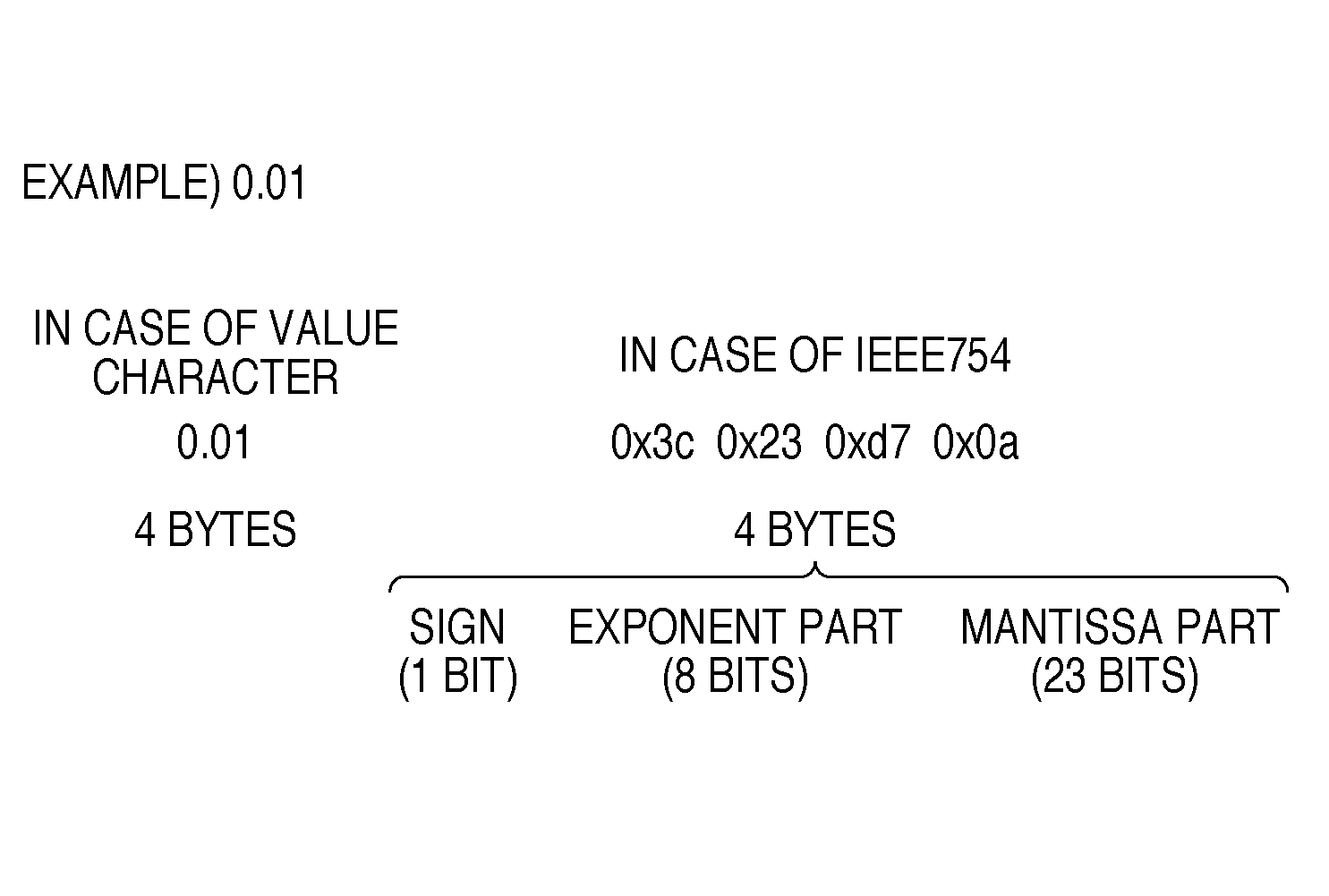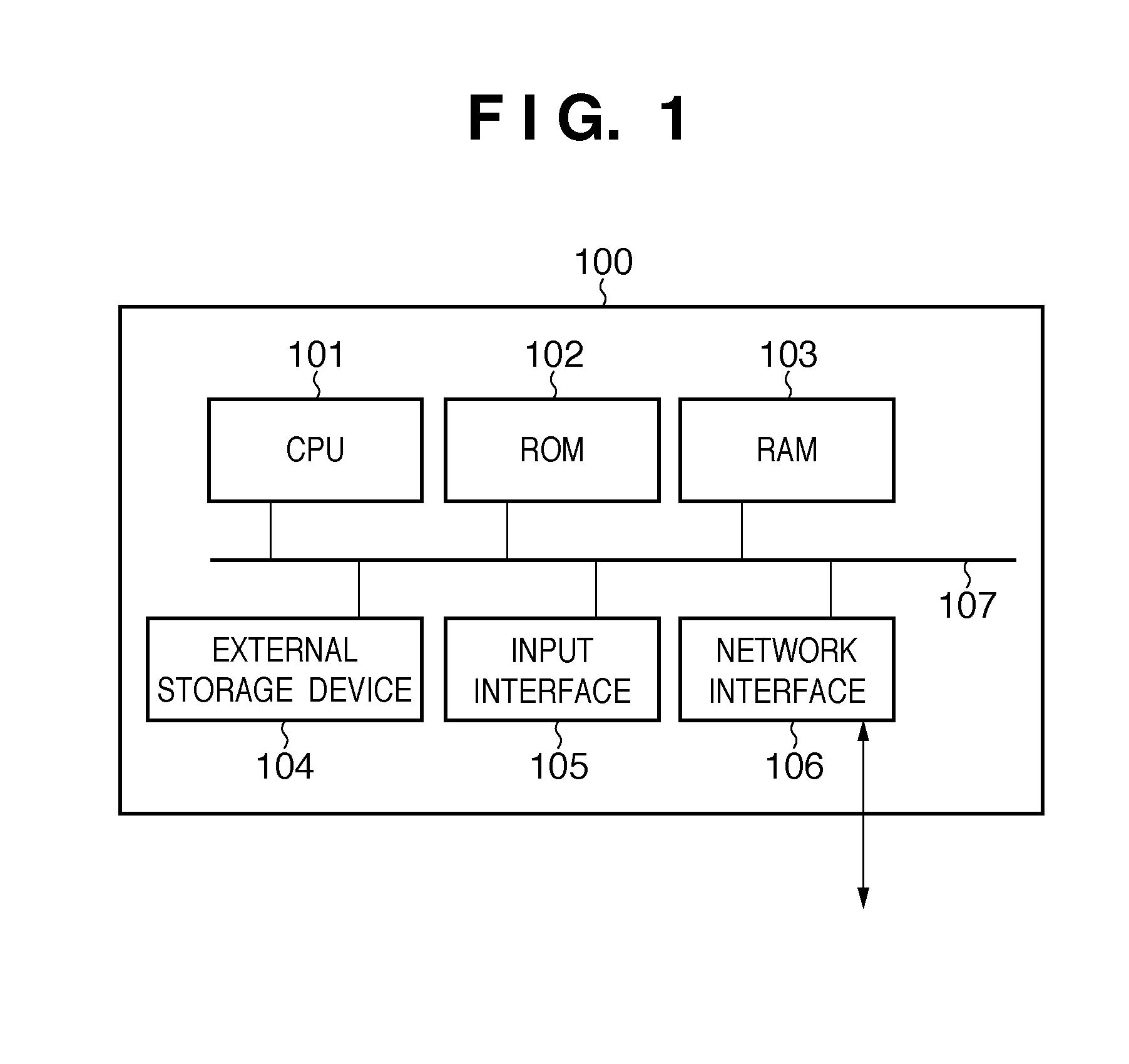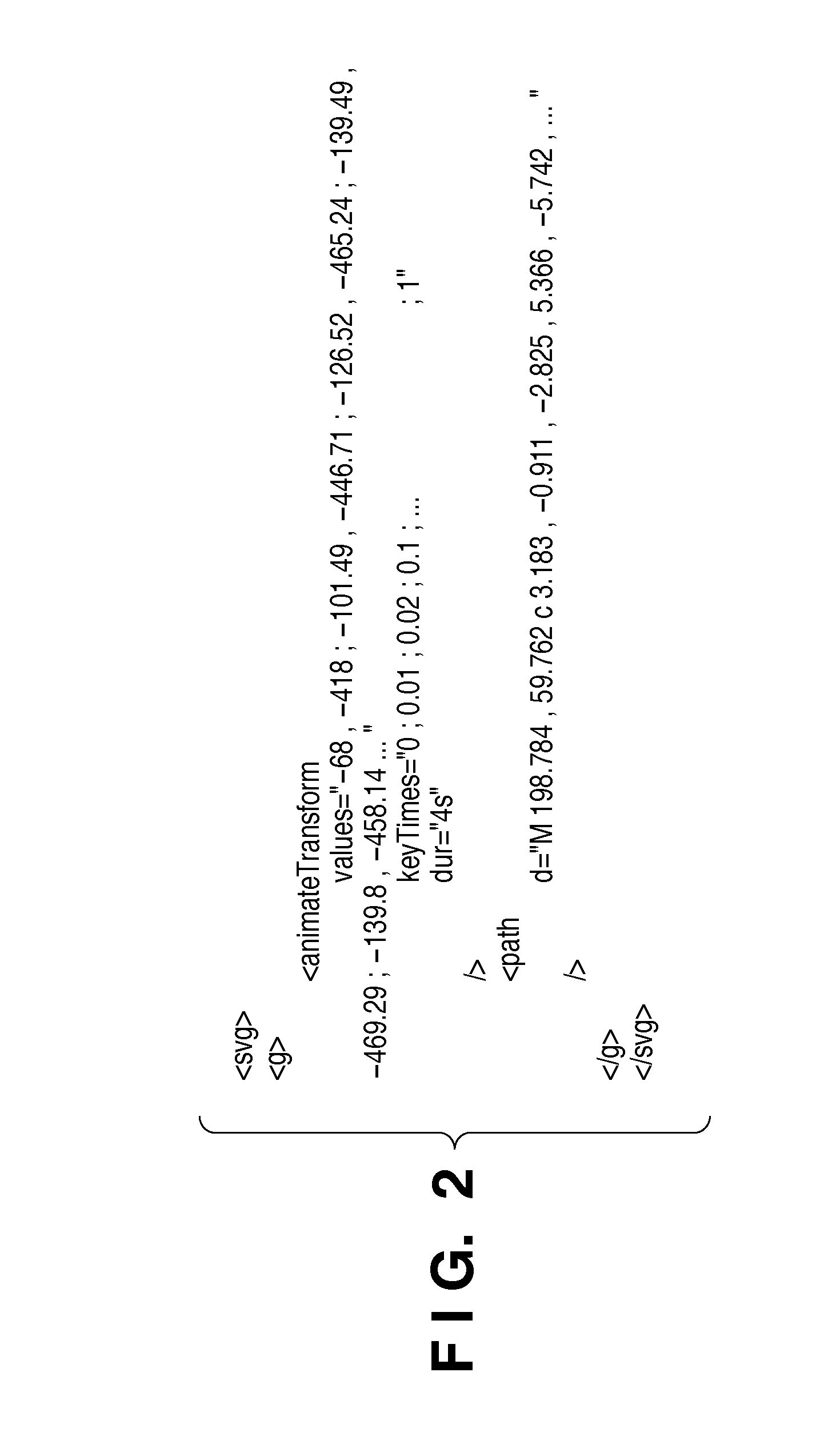Document encoding apparatus, document encoding method, and computer-readable storage medium
a document encoding and document technology, applied in the field of structured document encoding technique, can solve the problem that conventional techniques cannot often obtain a compression effect for data including coordinate values, and achieve the effect of improving compression efficiency
- Summary
- Abstract
- Description
- Claims
- Application Information
AI Technical Summary
Benefits of technology
Problems solved by technology
Method used
Image
Examples
first embodiment
[0047]FIG. 1 is a block diagram showing an example of the hardware arrangement of a computer which is applicable to a document encoding apparatus according to this embodiment. Note that the arrangement of an apparatus applicable to the document encoding apparatus according to this embodiment is not limited to that shown in FIG. 1, and various modifications are anticipated by those who are skilled in the art. Furthermore, the present invention is not limited to the document encoding apparatus according to this embodiment, which is implemented by a single apparatus, but it may be implemented by the collaboration of a plurality of apparatuses. In this case, the plurality of apparatuses are connected via a network such as a LAN or the like.
[0048]Referring to FIG. 1, a CPU 101 controls a whole computer 100 using programs and data stored in a ROM 102 and RAM 103, and executes respective processes to be described later, which will be explained as those to be implemented by the computer 100...
second embodiment
[0084]This embodiment will explain a case in which the encoding method described in the first embodiment is applied to a d attribute of the SVG document shown in FIG. 2. As in the keyTimes attribute, the d attribute describes many real number values including decimal parts having small digit counts. However, as shown in FIG. 2, the d attribute includes real number values including decimal parts having slightly larger digit counts than the keyTimes attribute like “198.784” and “59.762”. In such case, when these real number values undergo integer encoding, their encoded values have larger sizes than in the IEEE754 format, and such values are often preferably encoded in the IEEE754 format. Hence, this embodiment will explain a case in which the IEEE754 format and integer encoding are selectively used depending on a value to be encoded.
[0085]Since the flowchart of an encoding process according to this embodiment is basically the same as that shown in FIG. 4, the encoding process accordi...
third embodiment
[0111]This embodiment will explain a case in which the encoding method described in the first embodiment is applied to a values attribute of the SVG document shown in FIG. 2. The values attribute also describes many values. These values are enumeration of changes in certain value upon animation, and are used together with the keyTimes attribute. It is specified that the values of the values attribute are described using the absolute value expression. The values (−418, −446.71, etc.) include those which exceed 2 bytes if they undergo integer unlike in the first and second embodiments. Hence, this embodiment will explain encoding for these values described using the absolute value expression.
[0112]The encoding processing according to this embodiment will be described below.
[0113]A part to be encoded is designated in advance in the data of the SVG document. If all values are to be encoded, no designation is especially required.
[0114]In this embodiment, assume that the values attribute ...
PUM
 Login to View More
Login to View More Abstract
Description
Claims
Application Information
 Login to View More
Login to View More - R&D
- Intellectual Property
- Life Sciences
- Materials
- Tech Scout
- Unparalleled Data Quality
- Higher Quality Content
- 60% Fewer Hallucinations
Browse by: Latest US Patents, China's latest patents, Technical Efficacy Thesaurus, Application Domain, Technology Topic, Popular Technical Reports.
© 2025 PatSnap. All rights reserved.Legal|Privacy policy|Modern Slavery Act Transparency Statement|Sitemap|About US| Contact US: help@patsnap.com



